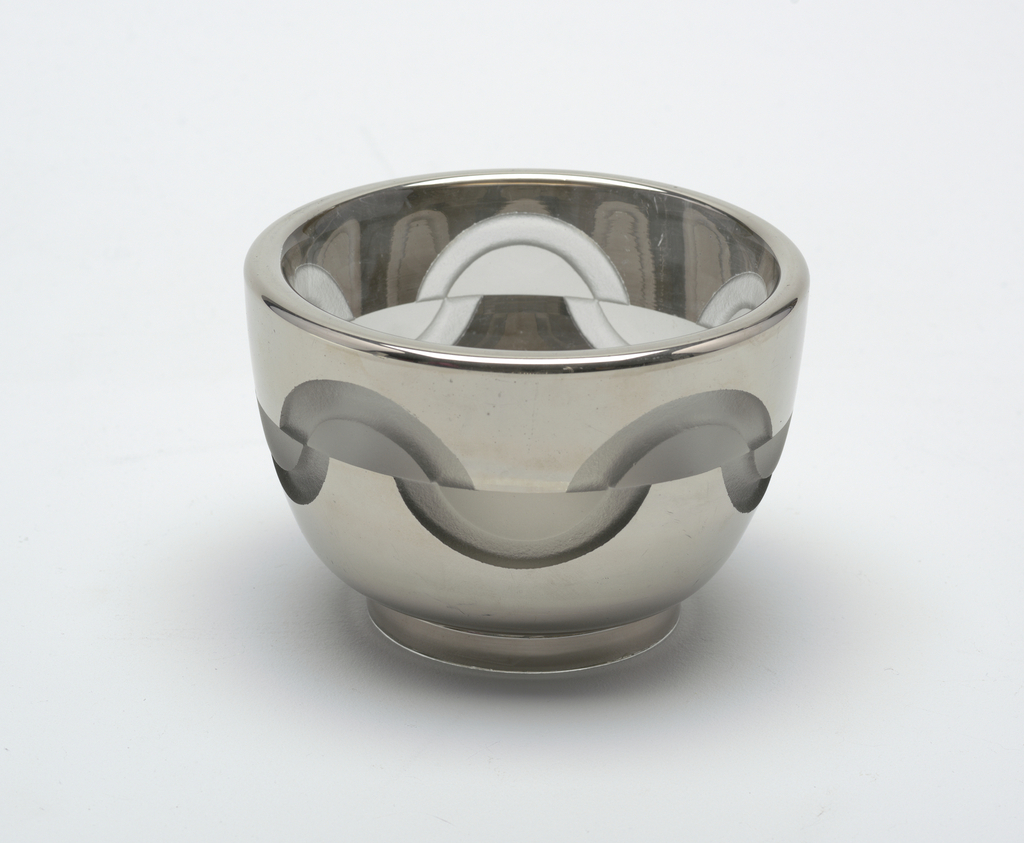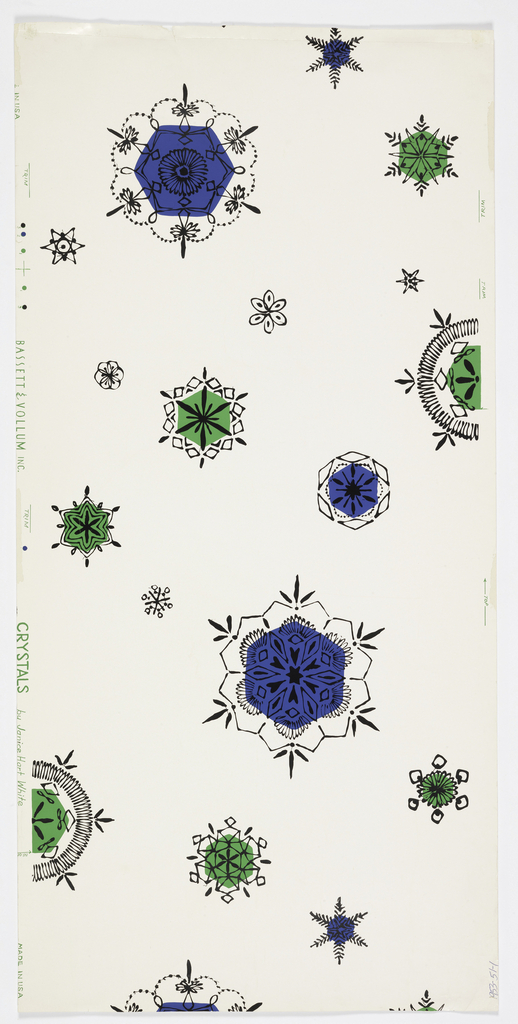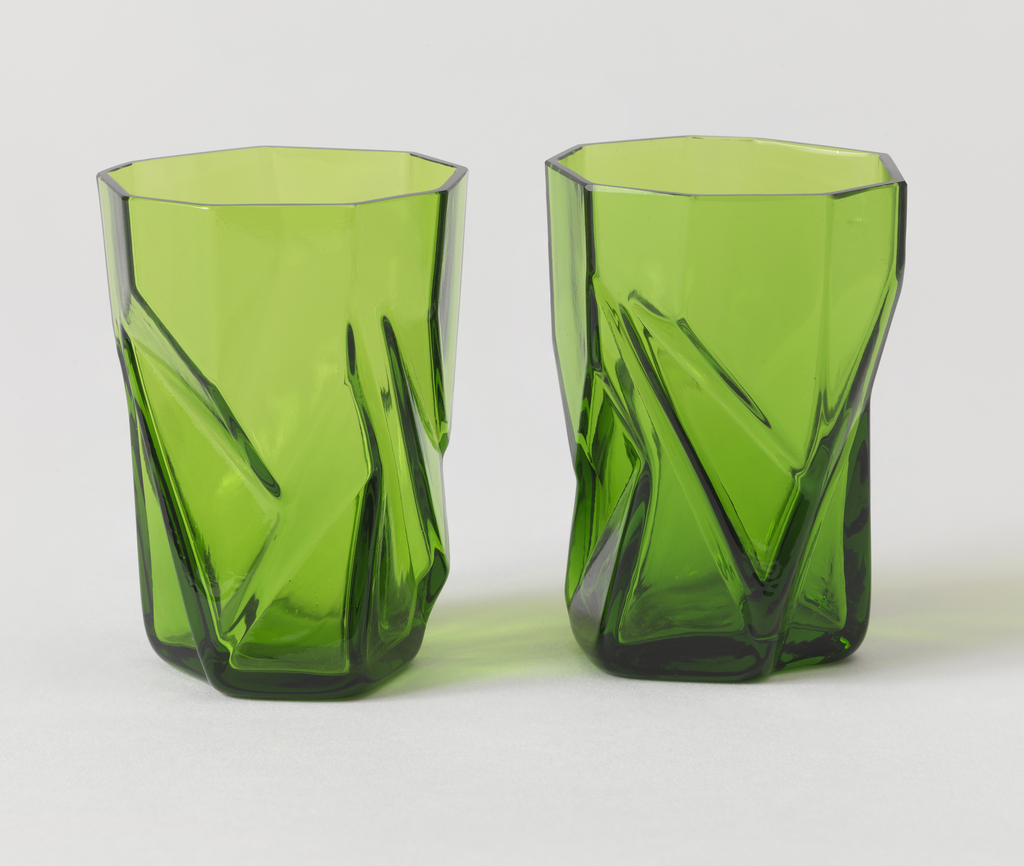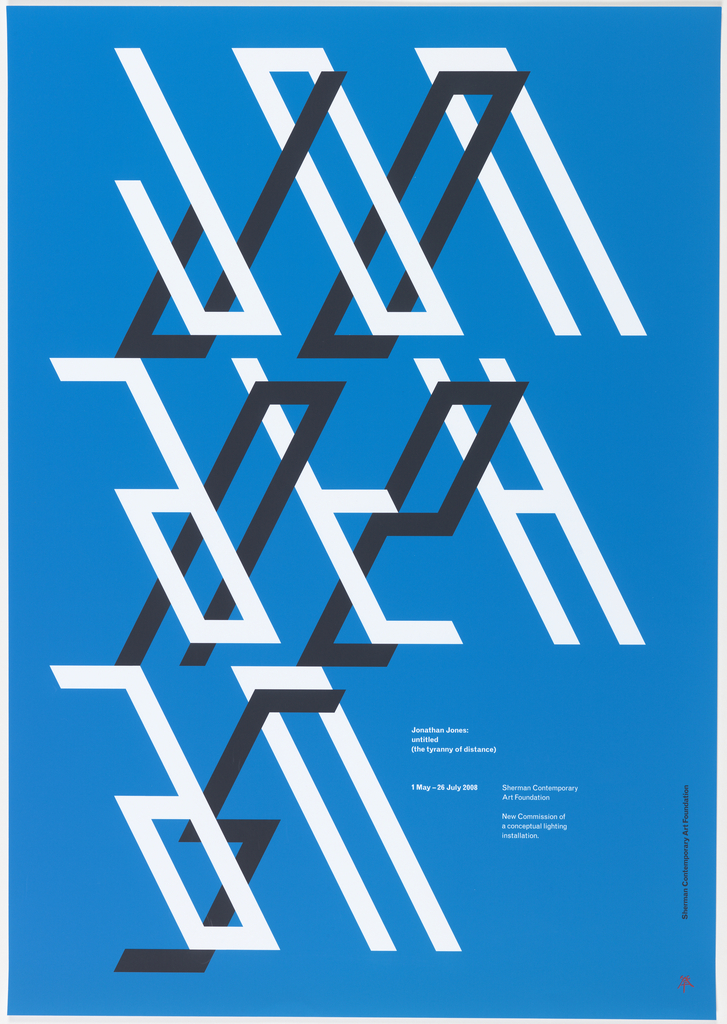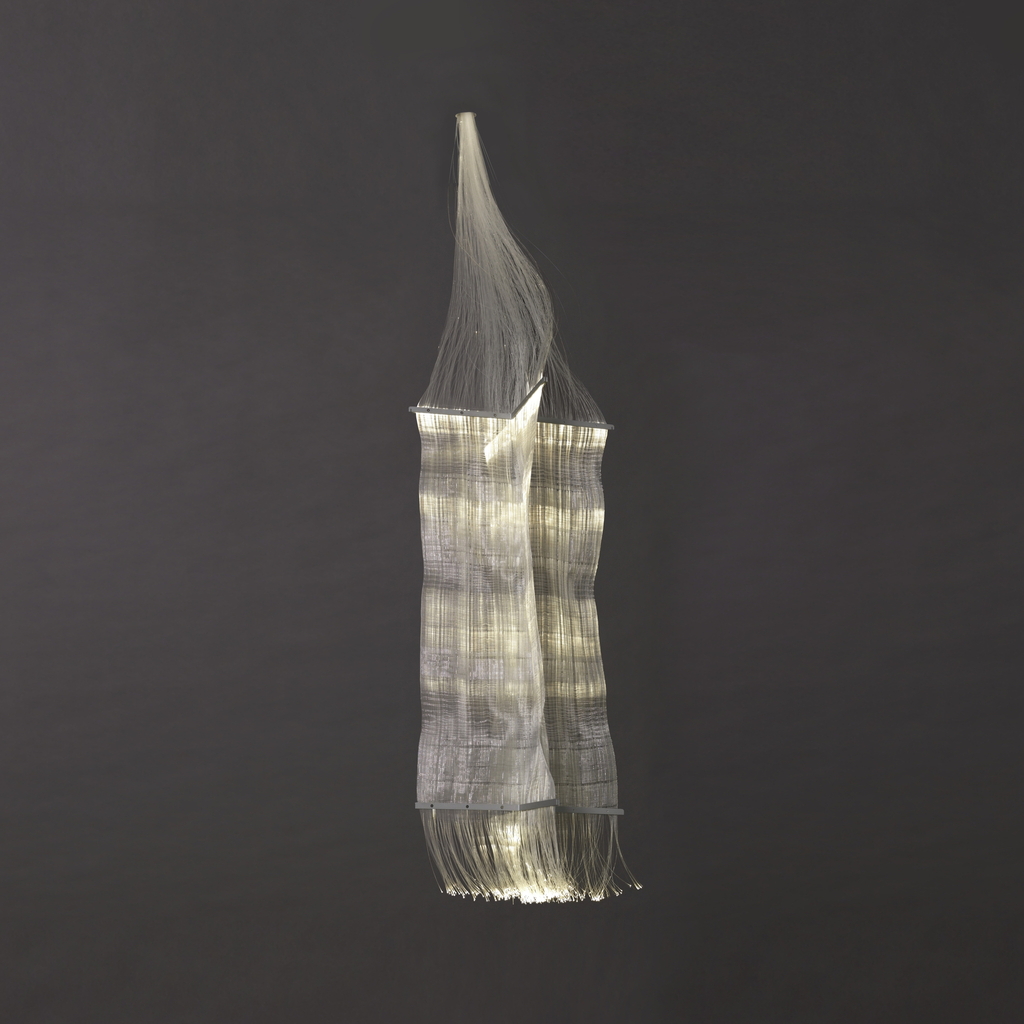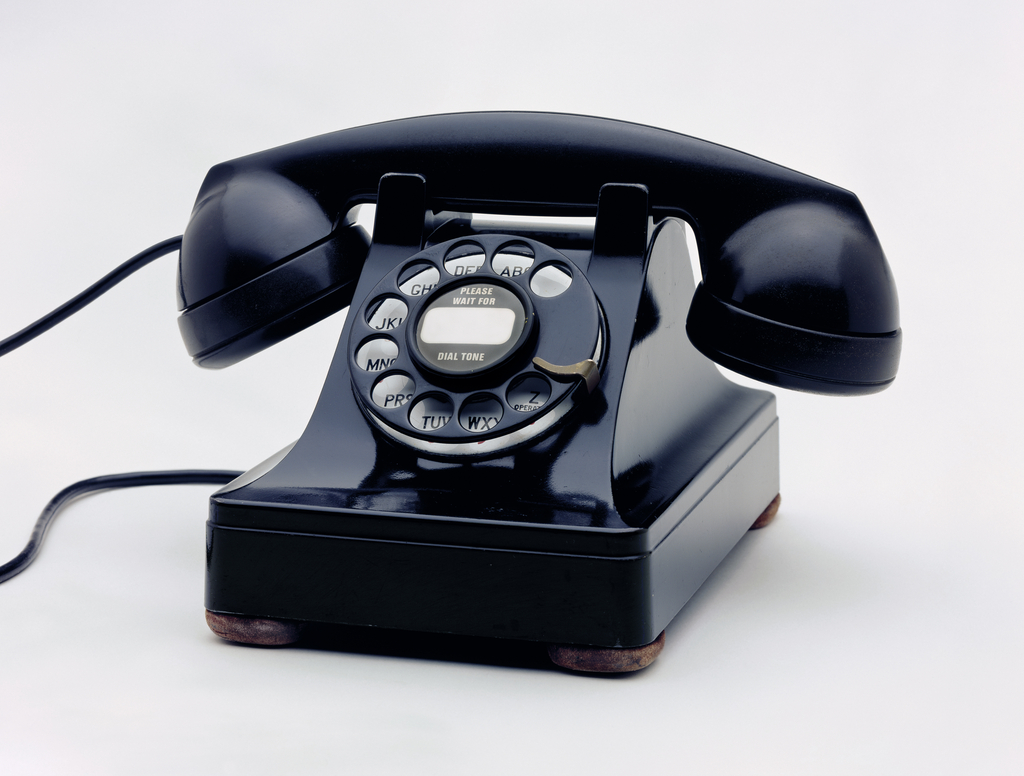This sweet little glass bowl evokes the shining, art deco optimism of the 1930s. Designed by Jean Luce and exhibited at the 1937 Exposition Internationale des Arts et Techniques dans la Vie Moderne, it speaks to the period’s interest in democratic materials and tells a story of increasing simplicity of form and decoration in design....
This seemingly seasonal sidewall was conceived by American designer Janet Hart White for Basset & Vollum, Inc. in 1953. Polygonal shapes of various sizes are outlined in black and scattered across a cream colored ground. Hexagonal medallions in bright blue and green highlight the intricate radial patterns contained within the polygons. For most of us,...
Introduced at the 1928 Pittsburgh Glass and Pottery Exhibit, designer Reuben Haley’s Ruba Rombic forms epitomize the geometric style and ideals of American Art Deco. The Art Deco style, popularized by the 1925 Exposition Internationale des Arts Décoratifs et Industriels Modernes in Paris, which likely also inspired Haley, is often characterized by jagged lines and...
Australian designer Mark Gowing explains that the repeating forms of his country’s minimalist landscape are manifested in his geometric compositions. This poster was designed to advertise a solo exhibition of the work of Jonathan Jones, a Sydney-based Aboriginal artist from the Kamilaroi/Wiradjuri nations located in South Eastern Australia. Jones’s work in sculpture and installation features fluorescent...
Designer Suzanne Tick has shown that design can be functional, sustainable, innovative, and aesthetically pleasing. For example, in a recent video made on the occasion of Earth Day, Tick wove interesting colorful textiles using foil balloons recovered from the beach, as well as wire hangers discarded by the dry cleaners. In creating this hanging lamp,...
Henry Dreyfuss’s earlier Model 302 was a beautiful sculptural object, but it had usability problems. The triangular profile of the handset caused the device to turn when cradled against the shoulder—the design didn’t account for people’s intuitive desire to talk hands-free. Dreyfuss addressed this issue with the Model 500, introduced in 1949. To create the...
In the 1930s, Bell Labs asked Henry Dreyfuss to create a new telephone set, to be used across AT&T’s vast phone system. Dreyfuss was a young man and an emerging voice in the field of industrial design. Designers including Dreyfuss, Raymond Loewy, and Walter Dorwin Teague were reinventing the point of contact between people and...
